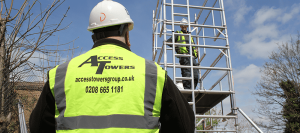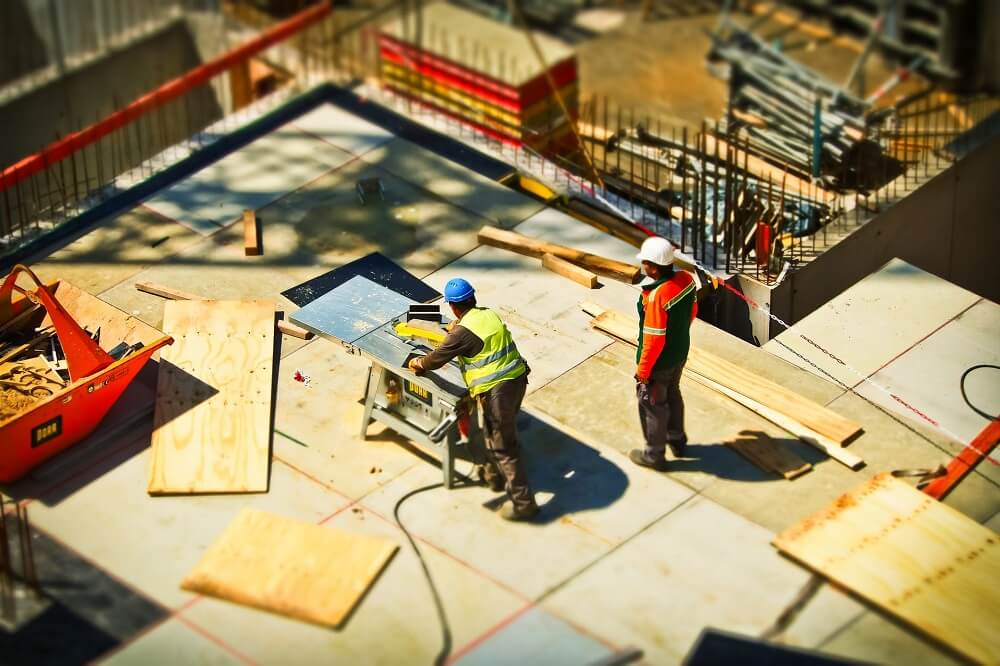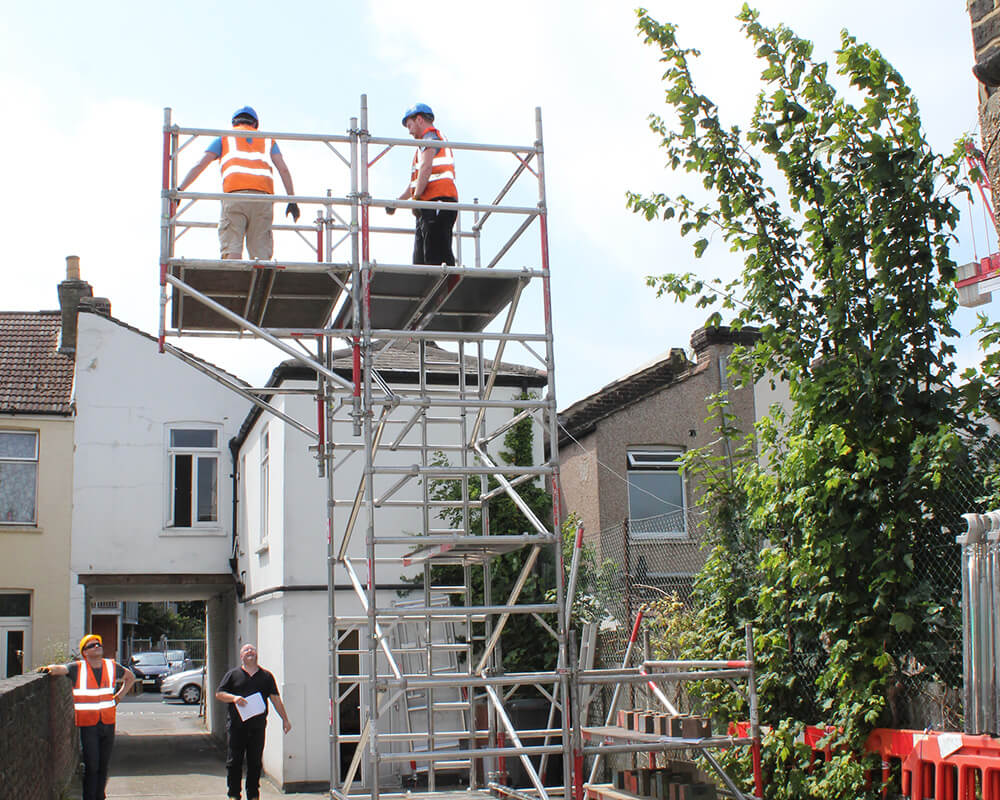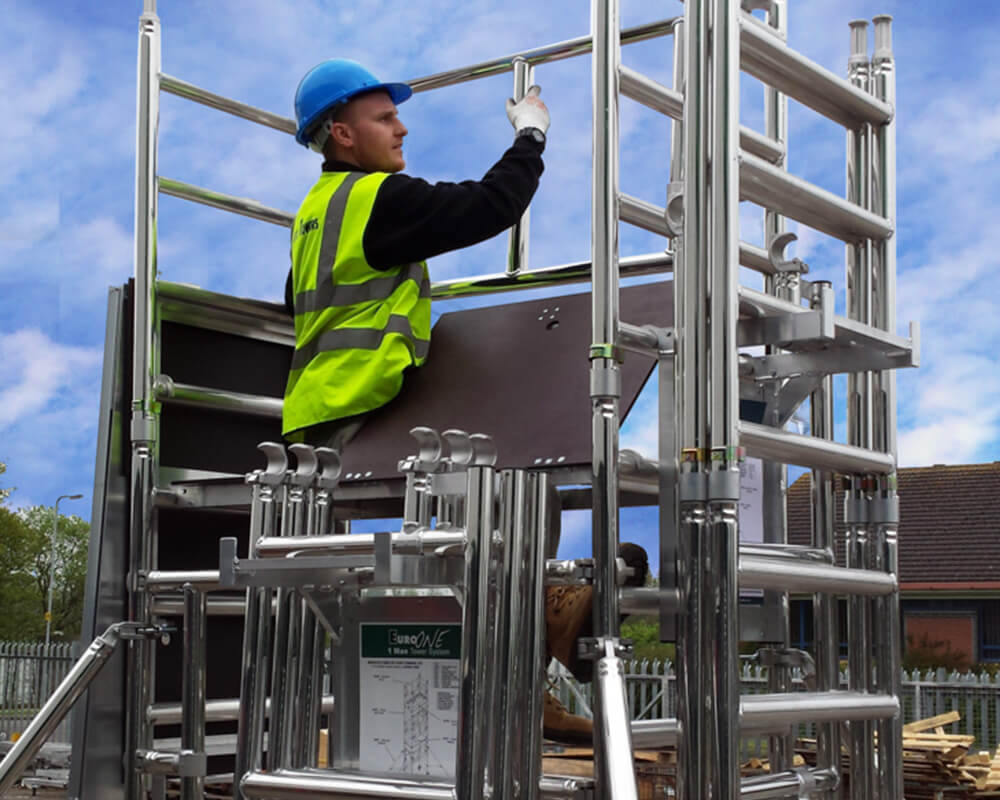Efficient Scaffold Hire: Maximising Your Project’s Potential
When it comes to construction and renovation projects, scaffold hire plays a crucial role in ensuring safety, efficiency, and productivity....
October 14, 2024
The Work at Height Regulations 2005 were created by the Health and Safety Executive (HSE) and are designed to prevent death and injury caused by falls from height. The regulations are a legal framework designed to protect workers from serious physical injury and to give employers guidance on their legal duties in a working environment.

Employers have initial and overall responsibility to ensure that a working site is as safe as possible. They must ensure that any work at height is properly planned and supervised, and that the correct equipment and PPE (Personal Protective Equipment) is used correctly. Employers must carry out a risk assessment before any work begins and ensure that all workers undergo the necessary training to guarantee competence.
Employees also have legal responsibility when working at height. This is relevant to themselves, their employer, and other on-site workers. All employees must take reasonable care within the working area to ensure that their actions to not endanger themselves, other employers or any people present. They must undergo any health and safety training deemed necessary and cooperate with their employer with regards to on-site safety.
Working at height is defined as ‘working in any environment where without precautionary measures in place, a fall from significant height could result in serious personal injury’. Examples of working at height include:
Some environments which are commonly exposed to risk from working at height include:
Although often overlooked, working from height includes any situation where a worker is required to use a raised platform or stepladder from where a fall could result in injury. This includes supermarket workers stacking shelves, warehouse operatives accessing goods and librarians sorting bookshelves.

The HSE Working at Height Regulations exist for protection and to safeguard against accidents. As an employer, there are certain things that you must consider before undertaking any work from height. The law states that when planning and carrying out any work from height, you must consider the following factors.
It is important to always view a working from height site in terms of minimizing risk. For example, only ever work from height where the elevation of workers is essential for the completion of the task.
As previously mentioned, all working at height situations must be carefully planned to minimize risk and optimise safety. Firstly, if it is possible to avoid working from height in the first place, you must consider using methods of working which are effective from ground level. This could include:
If working from height cannot be avoided, then you must plan to minimize risk to prevent a fall from occurring. Preventative measures include:
In certain circumstances, it may be impossible to minimize the risk of a fall from height. If this is the case, then you must take appropriate action to limit the distance or consequence of a fall. These limitations may include:
There has often been confusion surrounding the use of ladders when working from height. Ladders are often considered dangerous with some people believing that their use has been banned. This is not true, however, and ladders are often the most suitable method of accessing raised areas depending on the site limitations.
In confined spaces for example, ladders or step ladders may be the safest option for gaining access to a raised area. When using ladders ensure that all workers are competent in their correct usage. If a scaffolding system is required, make sure that you work with a respected and professional company for your scaffolding supply.
At Access Towers, we supply fully regulated and rigorously tested scaffolding and access systems across Greater London and the South East of England. We can also provide our customers with on-site PASMA training to ensure that all employers and employees are conversant with the safe and proper usage of our access systems.
If you’re involved in a project involving working at height and you’d like to find out more about how Access Towers can help, get in touch today. For more information about any of our products or services call 0208 665 1181 today.
When it comes to construction and renovation projects, scaffold hire plays a crucial role in ensuring safety, efficiency, and productivity....
October 14, 2024
Tower scaffolds are essential structures in the construction industry, providing safe and stable platforms for workers to carry out tasks...
September 7, 2024
Anything above ground level is considered Working at Height. Access Towers are a large provider of PASMA Training and sit within the top 5% in the UK, allowing us to train the full range of 1-Day PASMA Courses to suit any of your work at height Tower Training requirements.
It is recommended by Health & Safety standards that those who are assembling Towers should be PASMA Trained. This will give operatives a 5-year qualification of competency for the use of mobile towers.
Certifications will vary depending on what equipment you’re hiring. It’s always best to speak with our Hire Desk if you are unsure, where they can advise what will be best for you or in more advanced working conditions, we can install onsite.
Training courses are for anyone using the equipment, from commercially to domestically. These will range from PASMA Training for the use of Towers, IPAF Training for the use of MEWPS as well as various other courses such as Safety Harness Training and First Aid.
Our Hire Desk are trained across the full range of work at height stock available and will be able to advise and assist cost-free.
We aim for a next-day turnaround, this is dependent on the transport routes and how busy we are at the time. It works both ways and could be earlier than your requested date.

